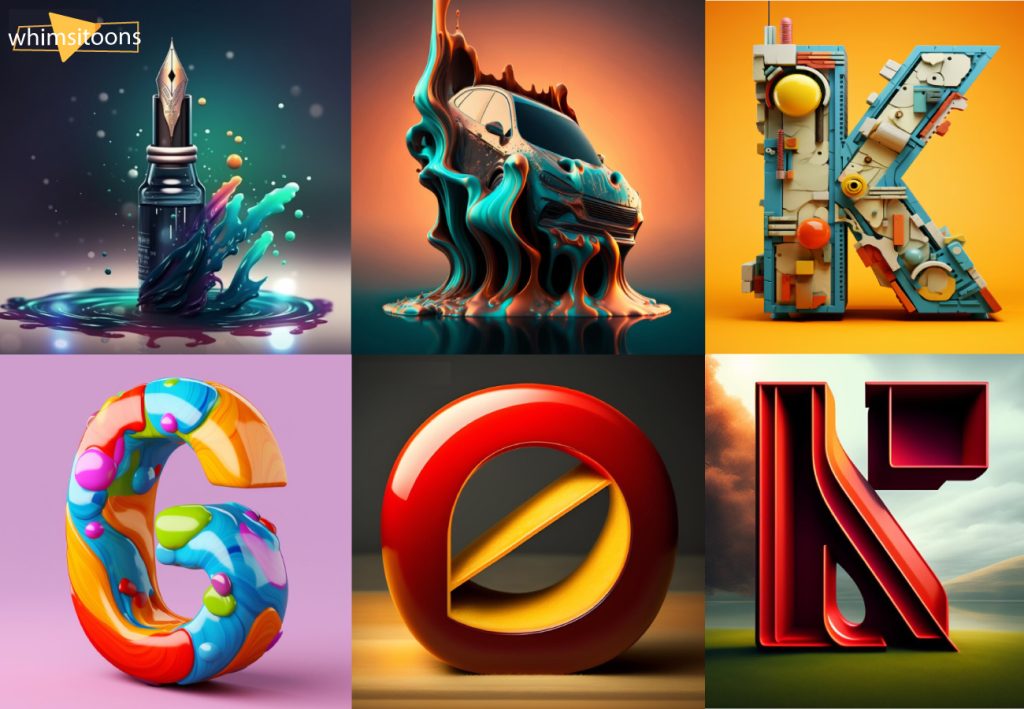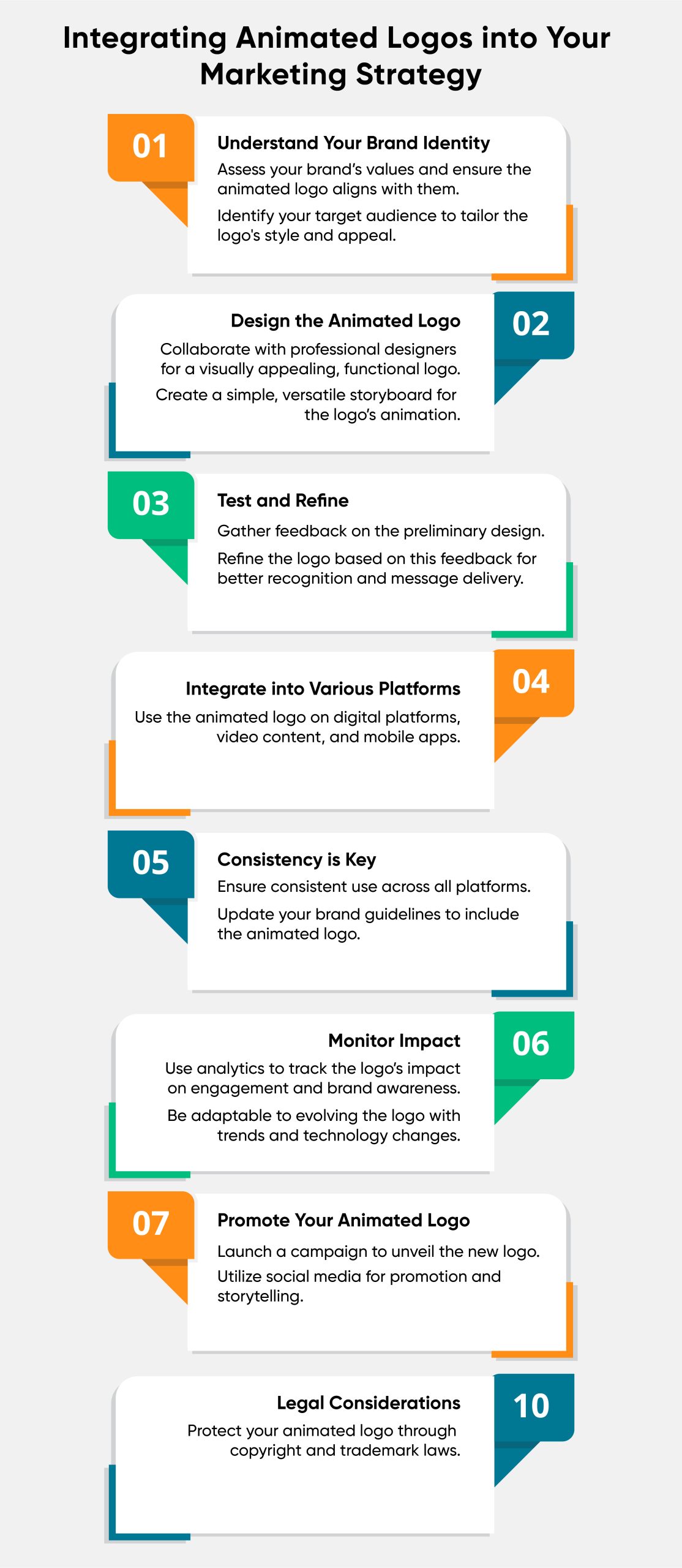The Evolution and Impact of Modern Animated Logo Design

Welcome to the world of Modern Animated Logo Design! This isn’t just another blog post; it’s a journey through the transformative world of branding and digital artistry. Today, we’ll dive deep into what makes animated logos not just a trend, but a powerful tool in the arsenal of modern branding strategies.
Understanding the Core of Animated Logos
Animated logos are more than just moving pictures. They are a dynamic and interactive representation of a brand’s identity. But why the shift from static logos to animated ones? It’s simple: engagement and memorability. An animated logo can tell a story, evoke emotions, and create a lasting impression in a way that a static logo often can’t.
The Emotional Connect
- Storytelling: Every twist, turn, and color in an animated logo narrates a part of your brand’s story.
- Emotional Engagement: Movement and change in logos can evoke emotions, making your brand more relatable.
Technical Advancements
- Technological Leaps: Advancements in software have made logo animation accessible and affordable.
- Versatility in Media: From websites to social media, animated logos are versatile and adaptable.
The Process of Creating an Animated Logo
Creating an animated logo isn’t just about animating a static design. It’s a detailed process that involves understanding brand ethos, audience psychology, and technical prowess.
Conceptualization
- Understanding the Brand: The first step is to deeply understand the brand, its values, and its audience.
- Storyboarding: Next comes the storyboard, where the animation’s narrative is laid out.
Design and Animation
- Designing the Logo: This is where the static logo is created, keeping in mind that it will be animated.
- Bringing it to Life: Using animation software, the logo is then brought to life.
Implementation
- Testing Across Platforms: It’s crucial to test the animated logo across various platforms for consistency.
- Integration: Finally, the logo is integrated into the brand’s various touchpoints.

The Impact of Animated Logos on Brand Identity
Animated logos have redefined the way brands communicate their identity. They aren’t just a trend; they are a new language of brand storytelling.
Strengthening Brand Recall
- Memorable: Animated logos have a higher recall value.
- Unique: They stand out in a sea of static logos.
Enhancing User Experience
- Engaging: They capture and hold attention.
- Interactive: Some animated logos interact based on user actions.
The Future of Logo Design: Embracing Animation
As we look towards the future, the role of animation in logo design is only set to grow. The possibilities are endless, and the technology is constantly evolving. Brands that adopt this trend will find themselves ahead of the curve.
Trends to Watch
- 3D Animations: Adding depth and realism.
- Interactive Elements: Logos that change based on user interaction.
The Role of AI and Machine Learning
- Predictive Design: AI could play a role in predicting design trends.
- Automated Animation: AI might streamline the animation process.
Modern Animated Logo Design: A Table of Differences
| Aspect | Static Logo | Animated Logo |
| Engagement | Limited | High |
| Storytelling | Basic | Advanced |
| Memorability | Moderate | High |
| Versatility | Good | Excellent |
| Technological Need | Minimal | Advanced |
Best Practices in Animated Logo Design
To ensure that your animated logo stands out, here are some best practices to keep in mind:
- Simplicity: Keep the design clean and uncluttered.
- Relevance: Ensure that the animation is relevant to the brand.
- Quality: Invest in high-quality animation.
- Adaptability: Make sure it looks good across all platforms.
Challenges and Solutions in Animated Logo Design
Embarking on the journey of creating an animated logo can be filled with both excitement and challenges. Understanding these challenges and knowing how to navigate them can significantly enhance the design process. This section delves into common hurdles in animated logo design and offers practical solutions to overcome them.
Challenge 1: Balancing Creativity with Brand Message
Problem: One of the primary challenges in animated logo design which software video animation services go through is striking the right balance between creative expression and accurately conveying the brand’s message. Too much creativity can overshadow the brand identity, while too little can make the logo uninteresting.
Solution:
- Focus on Brand Essence: Start by thoroughly understanding the brand’s core values and message. Ensure every element of the animation aligns with these.
- Simplicity is Key: Opt for simplicity over complexity. A simple yet effective animation can often convey a message more powerfully than a complex one.
Challenge 2: Technical Constraints
Problem: Designers often face technical constraints like file size limitations, especially when the logo is to be used on digital platforms with loading time considerations.
Solution:
- Optimize Animations: Use software that allows for optimization of the final file, reducing its size without compromising quality.
- Test Across Platforms: Regularly test the animated logo on different platforms to ensure it maintains quality and functionality.
Challenge 3: Updating Logos Over Time
Problem: As a brand evolves, its logo might need updating. The challenge with animated logos is that they can be more complex to update than static ones.
Solution:
- Build with Adaptability in Mind: Design the logo so it can be easily updated. This might mean creating elements of the logo that can be modified without needing a complete overhaul.
- Keep Source Files Organized: Maintain an organized archive of all source files and assets. This facilitates the process of making necessary modifications.
Challenge 4: Ensuring Cross-Platform Compatibility
Problem: Animated logos need to work seamlessly across various platforms and devices, which can be a challenge due to differing standards and technologies.
Solution:
- Responsive Design: Ensure the logo design is responsive and adaptable to different screen sizes and resolutions.
- Multiple Formats: Export the logo in multiple formats to ensure compatibility across different platforms.
Challenge 5: Standing Out in a Crowded Market
Problem: In a digital world where animated logos are becoming more common, standing out can be a challenge.
Solution:
- Unique Storytelling: Use the logo animation to tell a unique story or convey a message that resonates with your audience.
- Stay Current with Trends: While staying true to the brand, incorporating current design trends can keep the logo fresh and relevant.
Challenge 6: Balancing Cost and Quality
Problem: Budget constraints can sometimes limit the quality of the animated logo, especially for small businesses or startups.
Solution:
- Cost-Effective Tools and Software: Utilize cost-effective or free animation software that doesn’t compromise on quality.
- Professional Help Within Budget: Seek out professional designers or agencies that offer packages within your budget. Sometimes, investing a bit more upfront can save money in the long run by avoiding the need for frequent redesigns.
Animated Logo Design Tools and Software
When it comes to creating a modern animated logo, the tools and software you choose can significantly influence the final outcome. With the plethora of options available, selecting the right one can be daunting. This section aims to guide you through some popular tools and software, helping you make an informed decision for your animated logo design needs.
Adobe After Effects
- Overview: Adobe After Effects is a powerhouse for creating professional animations and visual effects. It’s widely used for its robust features and flexibility.
- Key Features: Offers advanced animation capabilities, 3D design space, and integration with other Adobe Creative Suite apps.
- Ideal For: Professionals looking for detailed control and those who are already part of the Adobe ecosystem.
- Pros: Highly versatile with comprehensive features; excellent for complex animations.
- Cons: Steep learning curve; subscription-based pricing.
Blender
- Overview: Blender is an open-source 3D creation suite. It’s free to use and offers a range of tools for animation, modeling, rendering, and more.
- Key Features: 3D pipeline—modeling, rigging, animation, simulation, rendering, compositing, and motion tracking.
- Ideal For: Those looking for a free, comprehensive 3D animation tool, from beginners to advanced users.
- Pros: No cost; community-driven with frequent updates.
- Cons: Can be overwhelming for beginners; less standard in the industry compared to Adobe products.
Canva
- Overview: Canva is known for its simplicity and user-friendly interface. It’s great for beginners and offers basic animation features.
- Key Features: Drag-and-drop interface, pre-made templates, basic animation options.
- Ideal For: Small business owners, social media marketers, and those who need quick, simple animated designs.
- Pros: Easy to use; no prior design experience needed.
- Cons: Limited in terms of advanced animation capabilities.
Cinema 4D
- Overview: Cinema 4D is a professional 3D modeling, animation, and rendering software. It’s known for its ease of use and powerful features.
- Key Features: Intuitive interface, wide range of tools for texturing, animating, and rendering.
- Ideal For: Professional designers and animators looking for a seamless 3D animation experience.
- Pros: User-friendly for a professional suite; great community and learning resources.
- Cons: Expensive; more suited for 3D animations than simple logo animations.
SVGator
- Overview: SVGator is a specialized tool for creating animated SVG files. It’s web-based and does not require coding skills.
- Key Features: Simple interface, no coding required, exports lightweight SVG animations.
- Ideal For: Web designers and developers looking to create lightweight, scalable animations for websites.
- Pros: Easy to use; animations are highly compatible with web platforms.
- Cons: Limited to SVG format; less versatile for non-web applications.
Inkscape
- Overview: Inkscape is a vector graphics editor that is fully open-source and free to use. It’s a great tool for creating and editing SVG files.
- Key Features: Flexible drawing tools, broad file format compatibility, bezier and spiro curves.
- Ideal For: Beginners and intermediate users who need a free tool for vector graphics.
- Pros: Free; good for creating the base design of logos.
- Cons: Not specifically designed for animation; more of a design tool.
Final Words:
Modern Animated Logo Design isn’t just about following a trend; it’s about embracing the future of brand storytelling and engagement. Animated logos offer an immersive experience, making your brand not just seen, but felt and remembered. As we continue to navigate the digital age, animated logos will undoubtedly play a pivotal role in how brands communicate their identity and values. So, are you ready to animate your brand’s story?
FAQs
Q 1: How much does it cost to create an animated logo?
The cost varies based on complexity and length of animation, but with the rise of accessible software, it's more affordable than ever.
Q 2: Can animated logos be used in all types of digital media?
Absolutely! From websites to social media, animated logos are versatile and adaptable.
Q 3: How long should an animated logo be?
Ideally, keep it short and sweet, typically a few seconds, to ensure it's engaging without being overwhelming.
Q 4: Are animated logos a passing trend?
Not at all. They are becoming a staple in digital branding strategies due to their effectiveness in engagement and storytelling.
Q 5: Can I animate my existing logo?
Yes, most static logos can be adapted into animated versions, though some might require slight modifications.










